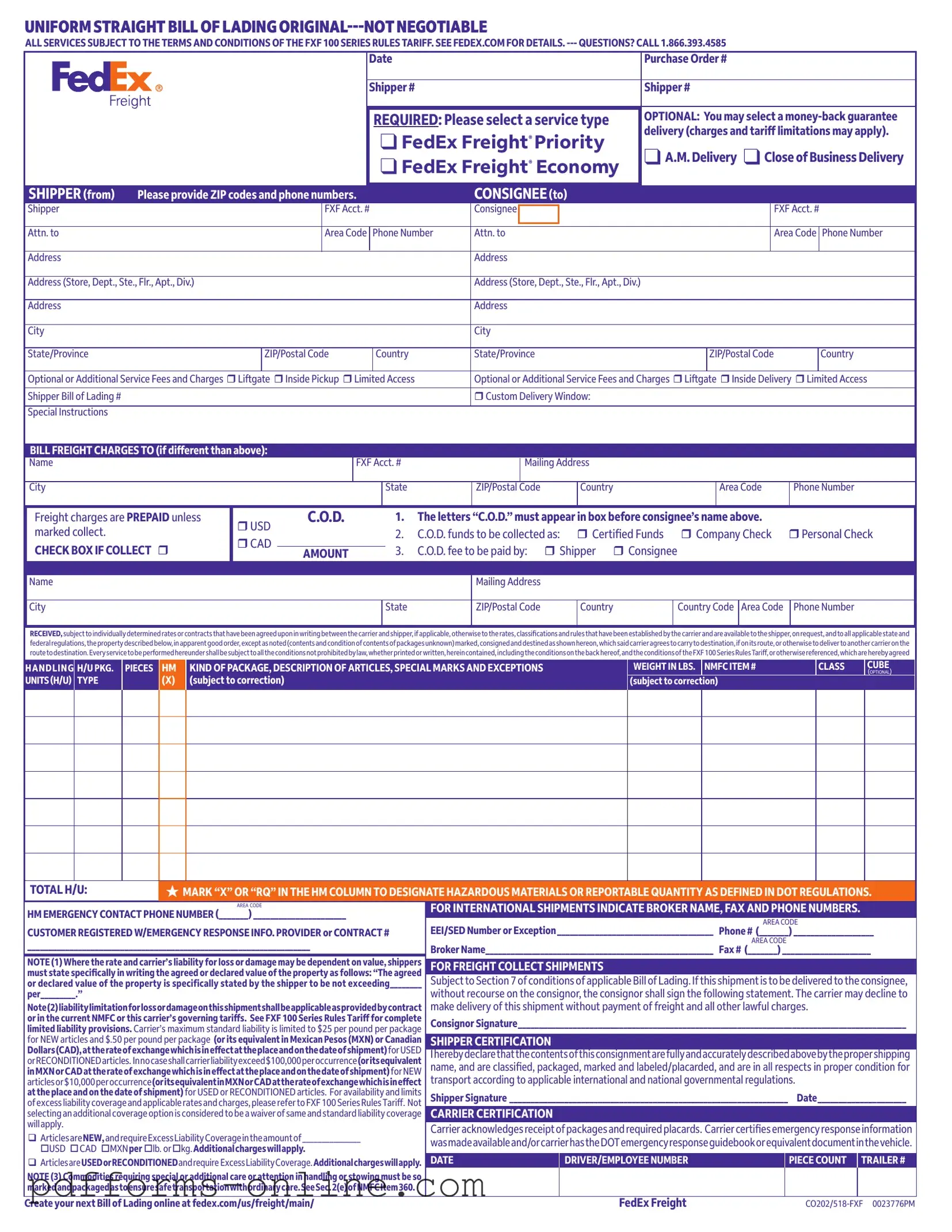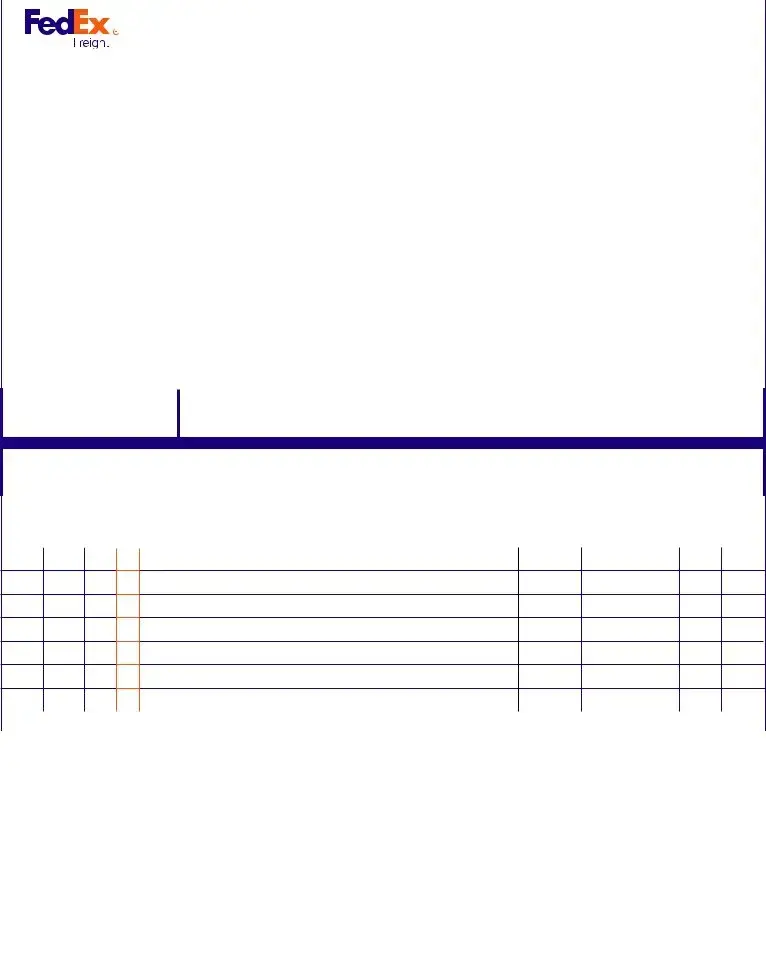The Uniform Commercial Code (UCC) Bill of Lading serves as a foundational document in the shipping industry. Like the FedEx Bill of Lading, it outlines the terms of the transportation agreement between the shipper and the carrier. This document is used to establish the receipt of goods and the conditions under which they will be transported. It provides essential details such as the type of goods, their destination, and the responsibilities of each party, ensuring clarity and accountability throughout the shipping process.
The Air Waybill (AWB) is another document similar to the FedEx Bill of Lading, specifically used for air freight shipments. It acts as a contract between the shipper and the airline, detailing the terms of transport. The AWB includes information about the shipment, such as the sender and recipient's addresses, the nature of the goods, and any special handling instructions. While it serves a similar purpose, it is tailored for air transport and often functions as a receipt for the goods shipped.
The Ocean Bill of Lading is utilized for maritime shipping and shares many characteristics with the FedEx Bill of Lading. It serves as a contract for the carriage of goods by sea and includes crucial information about the shipment, including the type of cargo, shipping route, and payment terms. Additionally, the Ocean Bill of Lading can serve as a document of title, which means it can be transferred to others, granting them ownership of the goods while in transit.
The Consignment Note is another document that resembles the FedEx Bill of Lading, particularly in its function as a receipt for goods. This document is typically used in road transport and confirms that the carrier has received the goods for shipment. It outlines the details of the shipment, including the sender and recipient information, as well as any special instructions. While it may not carry the same legal weight as a Bill of Lading, it still serves as an important record of the transaction.
The Delivery Order is similar to the FedEx Bill of Lading in that it instructs the carrier to deliver goods to a specific location. This document is often issued by the consignee or the shipper and serves as a request for the release of cargo. It includes essential details about the shipment and can be used to confirm that the goods have been received in good order, making it an important document in the logistics process.
The Freight Bill is another document that shares similarities with the FedEx Bill of Lading. It serves as an invoice for the transportation services provided by the carrier. This document outlines the charges for shipping, including any additional fees for special services. While it does not function as a contract for the carriage of goods, it is essential for billing purposes and helps both parties keep track of the financial aspects of the shipping transaction.
The Packing List is a document that complements the FedEx Bill of Lading by providing a detailed account of the items being shipped. It includes information about the contents of each package, such as quantities, descriptions, and weights. While it does not serve as a contract or receipt, it is crucial for inventory management and helps ensure that the correct items are delivered to the consignee.
The Shipper's Letter of Instruction (SLI) is another important document that works alongside the FedEx Bill of Lading. This letter provides the carrier with specific instructions regarding the shipment, including handling requirements and special requests. It helps ensure that the carrier understands the shipper's expectations and can execute the transport accordingly. The SLI is particularly useful in international shipping, where customs regulations may apply.
The Export Declaration is a document that is often required for international shipments and shares some similarities with the FedEx Bill of Lading. It provides information about the goods being exported, including their value and destination. This document is essential for compliance with customs regulations and helps facilitate the smooth movement of goods across borders. While it serves a different purpose, it is an important part of the shipping process for international transactions.
Finally, the Import Permit is a document that may be required for goods entering a country and can be related to the FedEx Bill of Lading. This permit provides authorization for the importation of specific goods and ensures compliance with local regulations. It is important for customs clearance and helps prevent delays in the shipping process. While it does not function as a contract, it is a vital document for international trade.

